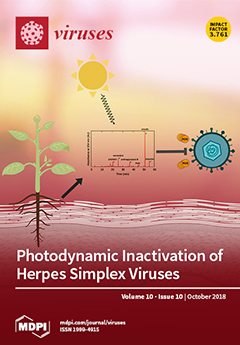1
Product Research and Development, Analytical Sciences, Sanofi Pasteur, Toronto, ON L4J 7Z4, Canada
2
Biogen, Inc., Research Triangle Park, NC 27709, USA
3
PathoQuest, 75015 Paris, France
4
Institute Pasteur, Biology of Infection Unit, Inserm U1117, Pathogen Discovery Laboratory, 75015 Paris, France
5
Merck & Co., Inc., West Point, PA 19486, USA
6
Texcell, Genavenir 5 1, Rue Pierre Fontaine, 91058 évry, France
7
Product Research and Development, Analytical Sciences, Sanofi Pasteur, 69280 Marcy L’Etoile, France
8
Division of Virology, National Institute for Biological Standards and Control, Medicines and Healthcare Products Regulatory Agency, South Mimms, Hertfordshire EN6 3QG, UK
9
Analytical Research and Development, GSK, 1330 Rixensart, Belgium
10
Division of Viral Products, Office of Vaccines Research and Review, Center for Biologics Evaluation and Research, U.S. Food and Drug Administration, Silver Spring, MD 20993, USA
†
Current address: Turnstone Biologics, Ottawa, ON K1S 3V5, Canada.
add
Show full affiliation list
remove
Hide full affiliation list
Abstract
A key step for broad viral detection using high-throughput sequencing (HTS) is optimizing the sample preparation strategy for extracting viral-specific nucleic acids since viral genomes are diverse: They can be single-stranded or double-stranded RNA or DNA, and can vary from a few thousand
[...] Read more.
A key step for broad viral detection using high-throughput sequencing (HTS) is optimizing the sample preparation strategy for extracting viral-specific nucleic acids since viral genomes are diverse: They can be single-stranded or double-stranded RNA or DNA, and can vary from a few thousand bases to over millions of bases, which might introduce biases during nucleic acid extraction. In addition, viral particles can be enveloped or non-enveloped with variable resistance to pre-treatment, which may influence their susceptibility to extraction procedures. Since the identity of the potential adventitious agents is unknown prior to their detection, efficient sample preparation should be unbiased toward all different viral types in order to maximize the probability of detecting any potential adventitious viruses using HTS. Furthermore, the quality assessment of each step for sample processing is also a critical but challenging aspect. This paper presents our current perspectives for optimizing upstream sample processing and library preparation as part of the discussion in the Advanced Virus Detection Technologies Interest group (AVDTIG). The topics include: Use of nuclease treatment to enrich for encapsidated nucleic acids, techniques for amplifying low amounts of virus nucleic acids, selection of different extraction methods, relevant controls, the use of spike recovery experiments, and quality control measures during library preparation.
Full article






